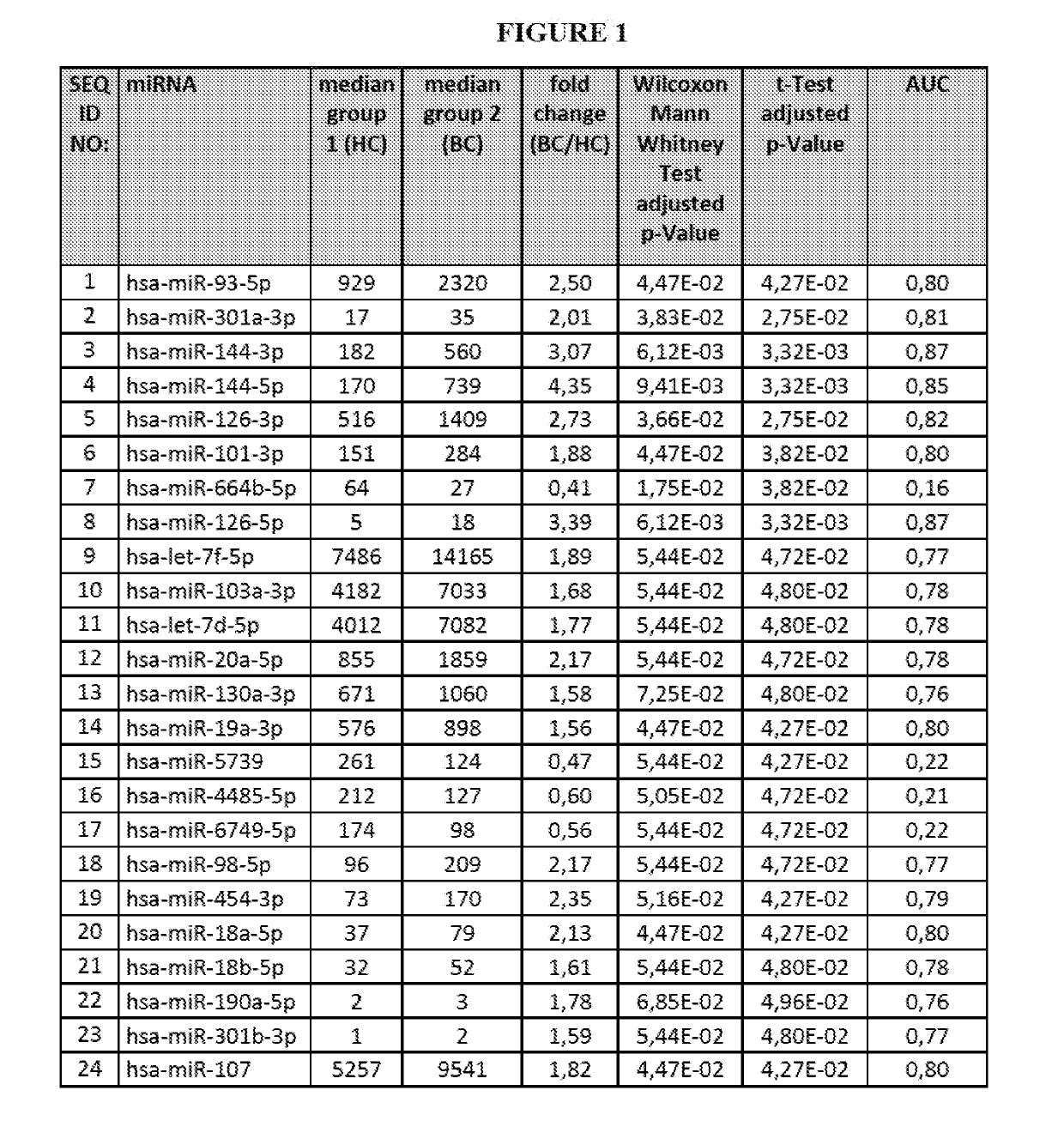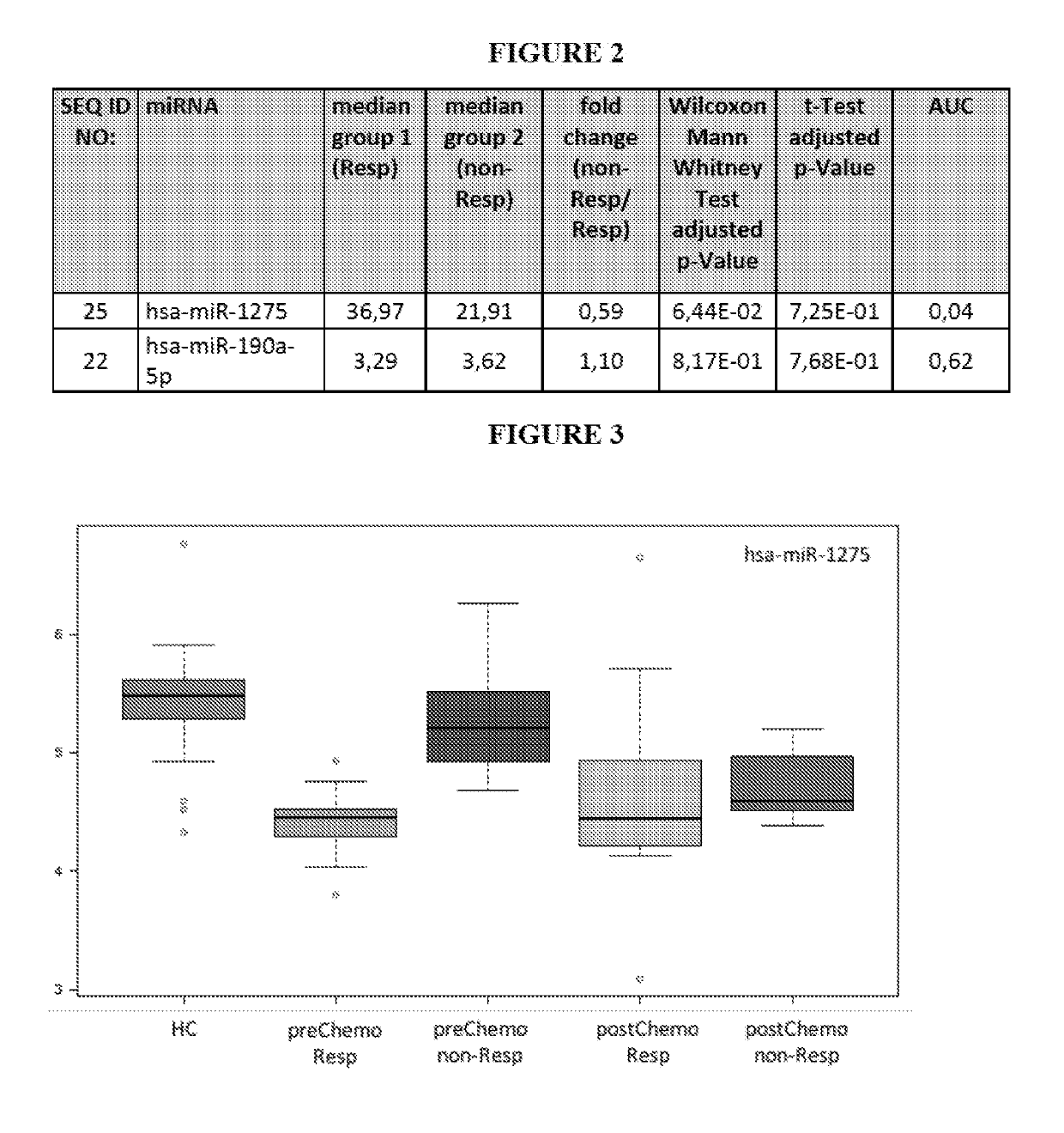Mirnas as non-invasive biomarkers for breast cancer
a breast cancer and biomarker technology, applied in the field ofmirnas as non-invasive biomarkers for breast cancer, can solve the problems of not being routinely used for breast cancer screening and expensive imaging techniques
- Summary
- Abstract
- Description
- Claims
- Application Information
AI Technical Summary
Benefits of technology
Problems solved by technology
Method used
Image
Examples
examples
[0305]The examples given below are for illustrative purposes only and do not limit the invention described above in any way.
1. Materials and Methods
1.1 Patient Samples
[0306]Blood was collected from subjects suffering from 21 breast cancer (in particular triple-negative breast cancer subjects, TNBC) and 21 subjects not suffering from breast cancer (healthy controls). For each of the breast cancer subject 2 samples were collected, namely one sample prior chemotherapy and one sample after being subjected to chemotherapy.
1.2 Blood Sample Collection Using PaxGene Blood RNA Tubes
[0307]For each blood donor 2.5 ml of whole blood was collected by venous puncture into a PAXgene Blood RNA Tube (PreAnalytix, Hombrechticon, Switzerland). The blood cells were derived / obtained from processing the whole blood samples by centrifugation. Herein, the blood cells from the whole blood collected in said blood collection tubes were spun down by 10 min, 5000×g centrifugation. The blood cell pellet (the cel...
PUM
| Property | Measurement | Unit |
|---|---|---|
| Tm | aaaaa | aaaaa |
| temperature | aaaaa | aaaaa |
| pH | aaaaa | aaaaa |
Abstract
Description
Claims
Application Information
 Login to View More
Login to View More - R&D
- Intellectual Property
- Life Sciences
- Materials
- Tech Scout
- Unparalleled Data Quality
- Higher Quality Content
- 60% Fewer Hallucinations
Browse by: Latest US Patents, China's latest patents, Technical Efficacy Thesaurus, Application Domain, Technology Topic, Popular Technical Reports.
© 2025 PatSnap. All rights reserved.Legal|Privacy policy|Modern Slavery Act Transparency Statement|Sitemap|About US| Contact US: help@patsnap.com



